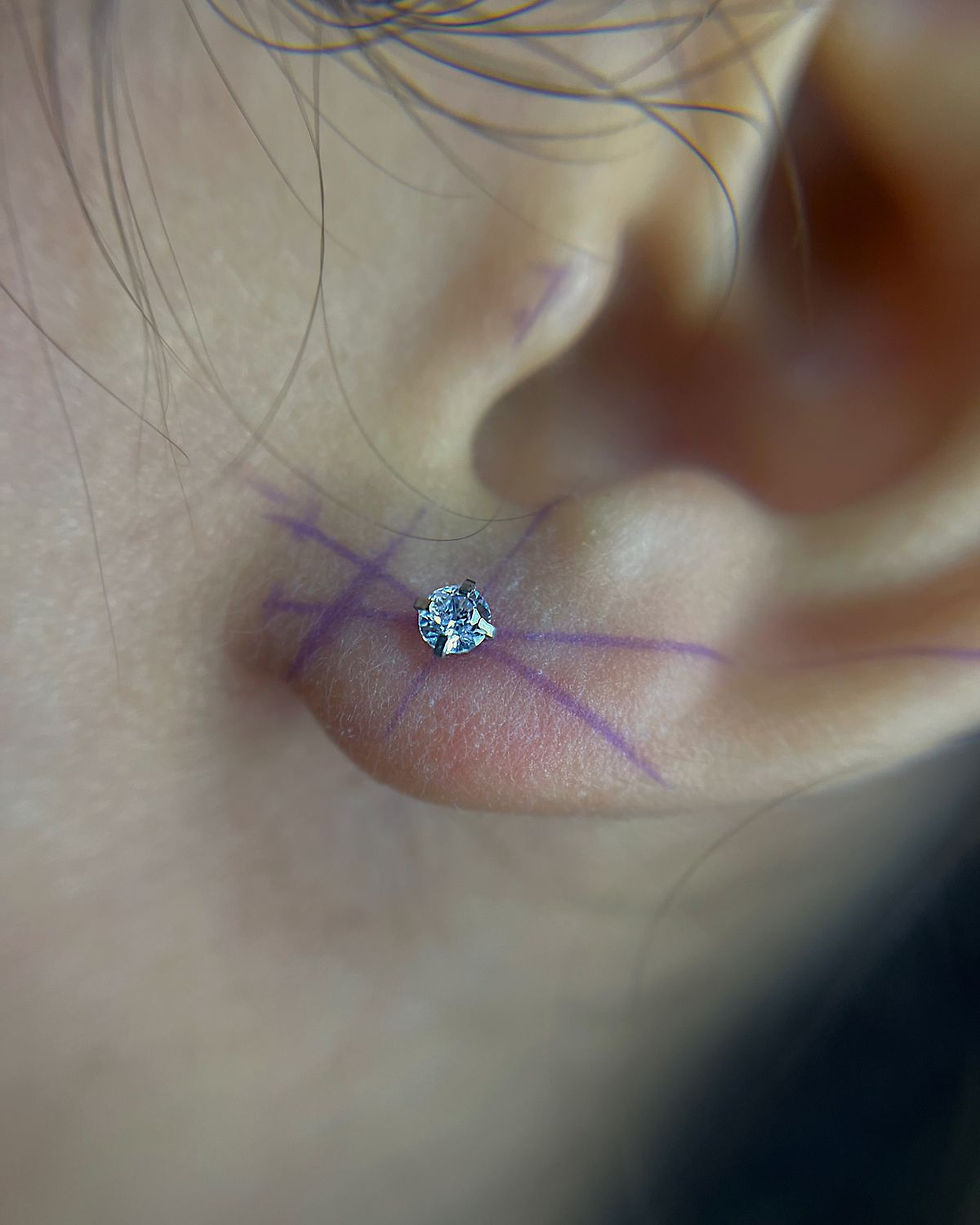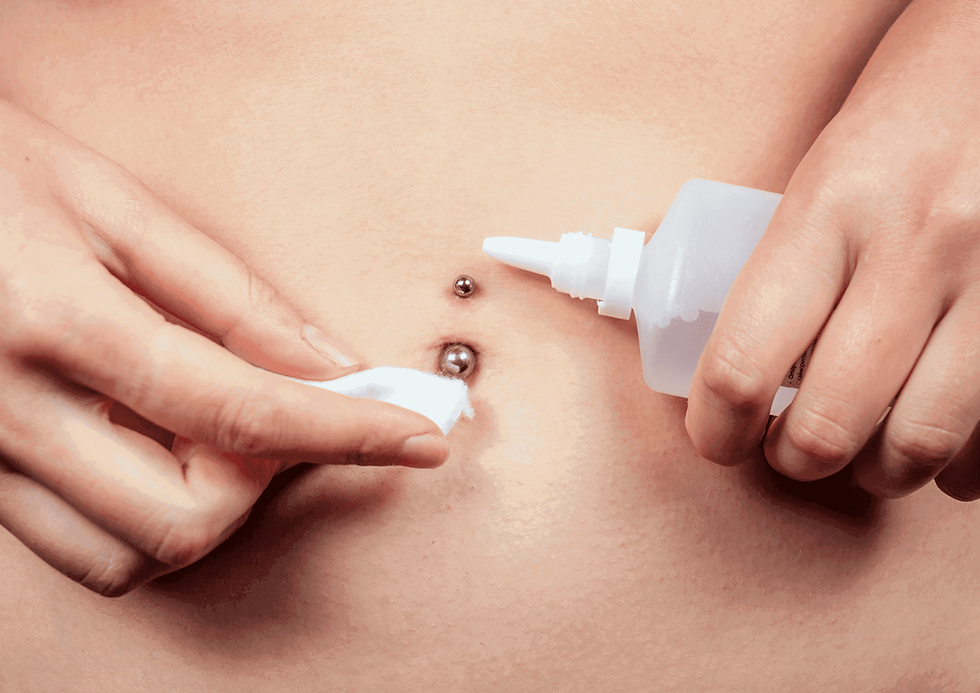New Piercings - What is Normal?
- Rosalyn Du plooy
- Jul 9
- 4 min read
Congratulations on your new body piercing!
It's an exhilarating experience, whether it's your first one or an addition to your collection.
The thrill and endorphin rush of a fresh piercing are incomparable. The initial days and weeks are especially exciting – showcasing your piercing to loved ones, capturing plenty of photos or selfies, and establishing a new aftercare routine to heal your piercing properly.
As piercers, we frequently dedicate a lot of time to educating our clients on aftercare – from the healing process and maintenance to vital information. However, have you considered what to anticipate during the initial stages of your new piercing? Remember, a piercing is essentially a wound, which can trigger various intriguing reactions in your body as it responds to this new wound and foreign object.
Bleeding is normal
Thanks to advancements in piercing tools and techniques, piercers have various methods to reduce bleeding. Many clients leave the studio without experiencing any bleeding. However, it can be surprising for them when they clean their piercing the next day and notice blood. Witnessing bleeding from a new piercing can be alarming and unsettling, but it is a common occurrence. When you puncture the skin, bleeding is typically a natural response to the process.
It's common to experience minimal to moderate bleeding in the first 1-2 weeks of healing after getting a body piercing. Since the piercing is a fresh wound, some bleeding is expected. Sometimes, while cleaning, inadvertently breaking the scab can result in bleeding. Similarly, any bump, catch, or snag on the piercing can have the same effect. Applying gentle pressure with non-woven gauze or tissue can help stop the bleeding, usually within a minute or two. If this occurs with your new piercing at the beginning, there's no need to worry.
Please be mindful that substances like alcohol, caffeine and certain medications can act as blood thinners. If you plan to go out for drinks the night after a new piercing, be cautious as it may lead to increased bleeding. Exercise caution in such activities and inform your piercer if you are on medications that could potentially result in excessive bleeding.
If bleeding persists despite applying gentle pressure for a few minutes or if the bleeding is excessive, it is advisable to promptly reach out to your piercer. Share some photos to illustrate the situation and consult with them to determine if additional care is necessary. In the meantime, keep the area clean and avoid touching it with unwashed hands to prevent any potential infection. It might also be helpful to avoid any activities that could aggravate the piercing, such as swimming in pools or bodies of water, which could introduce bacteria. Remember that your piercer is there to support you through the healing process, and don't hesitate to ask any questions or express concerns. If the situation doesn't improve, seeking advice from a healthcare professional is a prudent step to ensure your well-being.
Swelling
Swelling is a natural part of our body's healing process, specifically during the inflammation phase of recovery. It indicates that our bodies are actively repairing injuries. When you get a new piercing, swelling is completely normal. Certain piercings, such as oral piercings and more complex ear piercings like industrials and triple forward helixes, may experience more swelling. Your piercer should use jewelry that allows for this swelling and address any related concerns with you.
That said, finding the perfect jewelry that allows for swelling varies each time, just as each client and body does. Determining the appropriate length and type of jewelry for an initial piercing is not an exact science. This means piercers may be correct at times, but also incorrect occasionally. If the jewelry feels too tight or if either end starts to embed into the skin, it's a signal to visit your piercer for an assessment and possibly switch to a longer piece. Similarly, as the swelling reduces, you may need to change to a shorter piece, also known as downsizing.
Crusties on my piercings
Crusties are typical secretions that occur as part of the healing process. They usually appear as a liquid in off-white, pale yellow, or pale pink hues, drying around the jewelry into crust-like formations. Throughout the piercing healing process, you can expect to see these intermittently, and an essential aspect of piercing aftercare involves delicately removing them.
Different individuals experience varying levels of crust formation, leading to frequent or infrequent cleaning routines. The healing process in the piercing industry is not universal; it varies for each person.
Itching
Itching is a common yet annoying aspect of the healing process. Throughout the healing period, many piercings may experience itchiness, especially in the initial few weeks or months. This sensation indicates that your body is healing properly, which is a positive sign. However, dealing with the itchiness can still be quite frustrating. To alleviate the itch, taking a warm shower, keeping the piercing clean, and resisting the urge to touch it are the most effective ways to find relief.
Bruising
It might come as a surprise, but bruising can be a common occurrence with a new piercing, especially in areas like the eyebrow and lip that have high blood flow. However, it can happen anywhere, even in areas like the navel, nipple, or earlobe! If you notice bruising, it's best to check in with your piercer for reassurance, even though they'll likely confirm that everything is normal and you're okay.
Pain and Tenderness
As I mentioned earlier, a piercing is essentially a wound. And let's face it, no wound feels good to touch or mess with right after you've acquired it! Piercings are no different. They often come with swelling and tenderness – and new piercings can be quite sensitive. It's essential to refrain from unnecessary touching, movement, or fiddling with new piercings to allow the tenderness and swelling to subside. Keep in mind that some piercings may be more sensitive than others; for instance, industrials, orbitals, or multiple ear piercings at once are likely to be more tender. Oral piercings, especially tongue and lip piercings that affect eating and speaking, are also prone to heightened sensitivity.
Getting a new piercing is an incredibly thrilling experience, yet it can also bring about some nervousness and anxiety. This feeling is completely normal, especially if you're unsure about what to anticipate! This blog aims to ease any concerns you may have and guide you through the initial weeks with your new piercing. Wishing you a smooth healing process!
Till next time <3



Comments